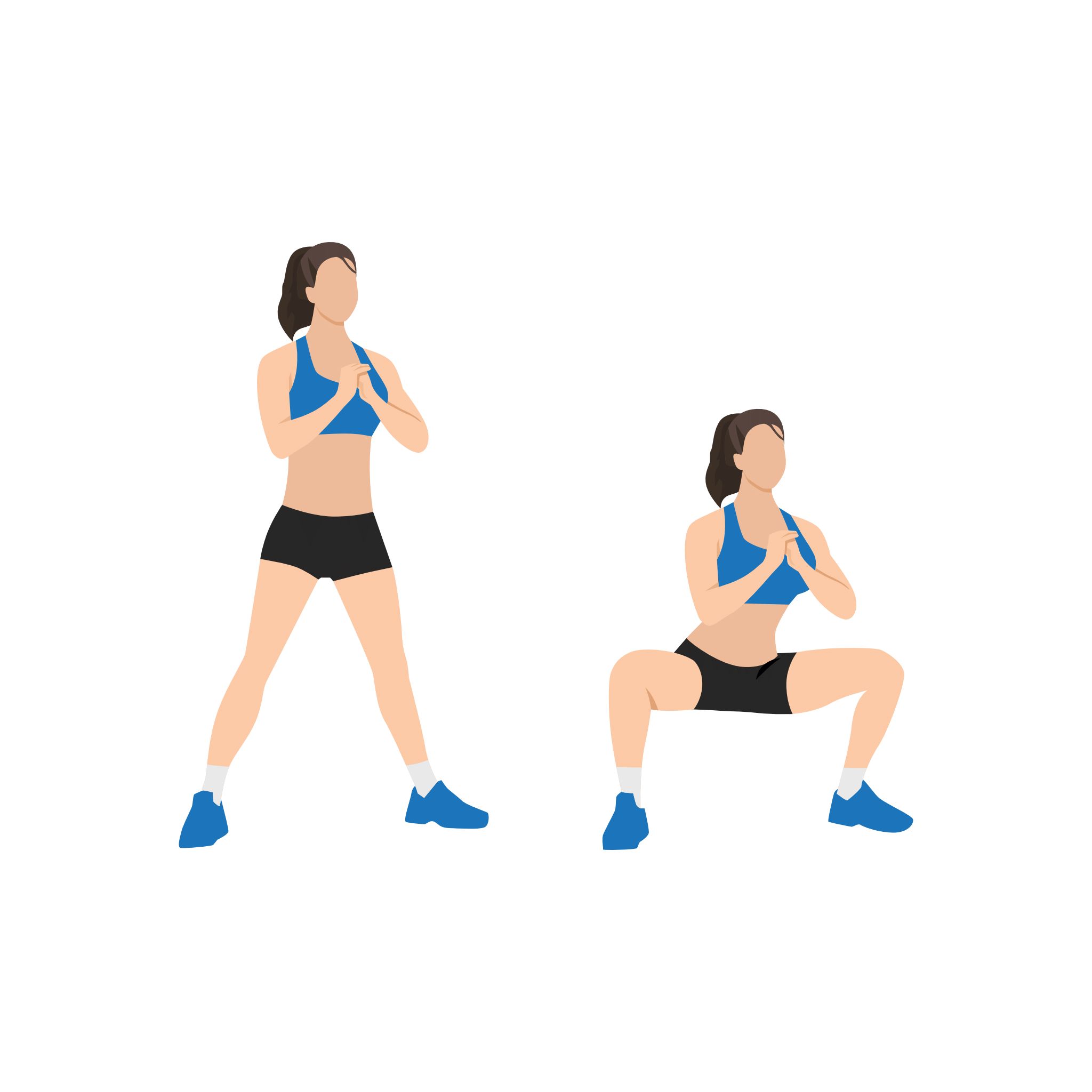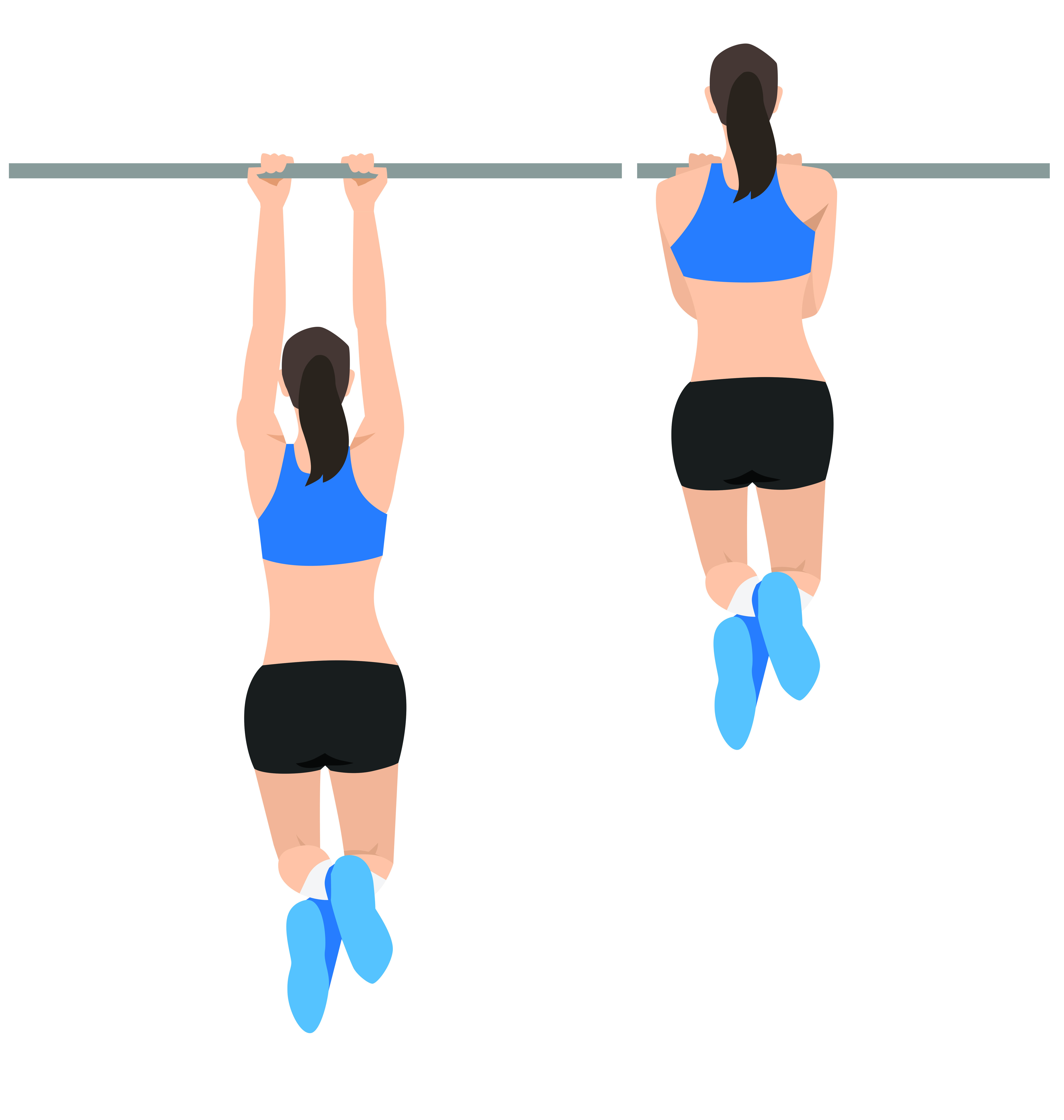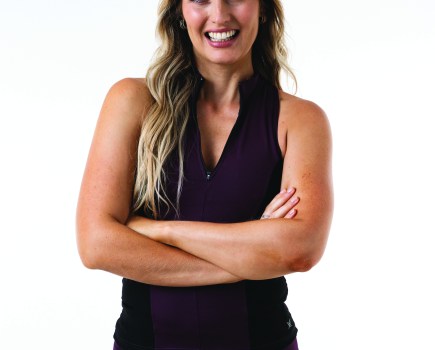Wondering where to start when returning to fitness after a break? Fear not. With this progressive 4-week fitness plan, we’ve got your back (and arms, shoulders, abs, legs…)
Newsflash: taking a break from training can be a good thing. A bit of downtime can give your brain and body the time it needs to recover from regular exercise, not to mention that holiday headspace can do wonders for motivation levels. And while you may panic that doing less or no exercise during your two-week summer holiday or the six-week summer break will cause your fitness levels to plummet, it takes longer for fitness to decline than you might think.
Related: Get fit in 28 days with our hybrid training workout plan!
‘Data shows that cardiorespiratory fitness – indicated by a person’s VO2 max (the maximum threshold of oxygen a person can use during exercise) – drops by about 10 per cent over four weeks after a person stops training,’ explains PT Josh Ivory. ‘But when it comes to strength, evidence suggests that it takes 12 weeks without training for the average person to experience a significant decrease in the amount of weight they can lift.’
Of course, there are useful things you can do to maintain some fitness while on holiday, including enjoying ‘active rest’ days by keeping your body moving through other means, such as exploring the local town on foot or going scooting with the kids. But if you barely moved while away, that’s OK, too.
‘The time it takes to get fit again can depend on a number of factors, including a person’s fitness level, age and how hard they work,’ explains Ivory, ‘but some studies do indicate that even just six sessions of interval training can lead to an increase in VO2 max.’ The take-home? You can regain fitness lost when returning to exercise, plus you might have a little more vim and vigour to boot.
Related: How to motivate yourself to go to the gym
Returning to fitness after a break
Ready to get back on it? The first thing to do when returning to fitness after a break is to start slowly and find a plan you enjoy. ‘It’s important to maintain the fun factor within training. If you don’t enjoy it, then the likelihood of falling off the wagon increases,’ says Ivory. ‘A drop in daily step count is also a common consequence of ceasing a fitness regime. According to the NHS, the average Brit walks between 3,000 and 4,000 steps a day – we should be aiming for 10,000.’
Below, Ivory has developed a 4-week plan that will kickstart your return to fitness after a break. The programme consists of three weekly weights sessions. ‘These are extremely important for building strength,’ says Ivory. ‘When done correctly, these sessions will decrease your chance of injury and release the feel-good endorphins that will benefit other areas of your fitness and daily living.’
There are also low-intensity steady-state (LISS) cardio workouts, for which you do an aerobic activity of your choice at a low-to-moderate intensity (e.g. a brisk walk or steady cycle). ‘These sessions boost active recovery, increase calorie expenditure and keep your body moving throughout the week,’ says Ivory.
‘If you feel up to it and your body is recovering adequately between sessions, you can replace them with something of a higher intensity.’ To maximise your results, it pays to start steadily and ensure there is enough energy for the workouts. Plus, don’t forget to set a motivating goal.
Set some fitness goals
Setting a workout goal can help keep your fitness on track. Here are some suggestions:
- Clock 10,000 steps every day for four weeks
- Eat a target amount of protein every day for four weeks
- On week four, complete a set amount of rounds within the time limit
Fuel up for your workouts
Having a good training programme is important but it is also pays to stay on top of your sleep goals (aim for 7-8 hours per night) and your food intake. Eat too little and you will see a dip in performance. Eat too much and you may not get any lean results you’re hoping for. To simplify what a balanced plate looks like, we can use hand measurements. Here’s what you should be having:

- One palm of protein such as meat, fish, beans
- One fist of non-starchy vegetables such as broccoli, tomato, spinach
- One cupped hand of carbohydrates such as fruit, rice, pasta, starchy vegetables
- One thumb of fats such as cheese, peanut butter, other butters, nuts
The 4-week workout plan
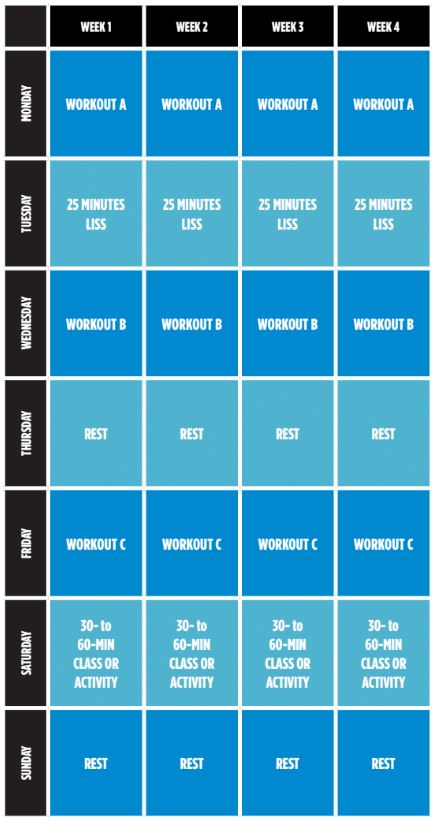
Workout A
- Sumo squat: 3×12 (rest 90 secs)
- Dumbbell step-up: 3×15 (rest 60 secs)
- Seated shoulder press: 3×15 (rest 60 secs)
- Push-up: AMRAPx3 (rest 60 secs)
- 10 mins of:
- 40 seconds Walkout (rest 15 secs)
- 40 seconds Kneel-to-squat (rest 15 secs)
Sumo squat
Start with your feet in a wide sumo stance, with toes pointing out, hands clasped at chest height. Keeping your back extended and eyes looking ahead, bend your knees. Return to the start and repeat. To progress, hold a heavy dumbbell in both hands, arms extended between your legs.
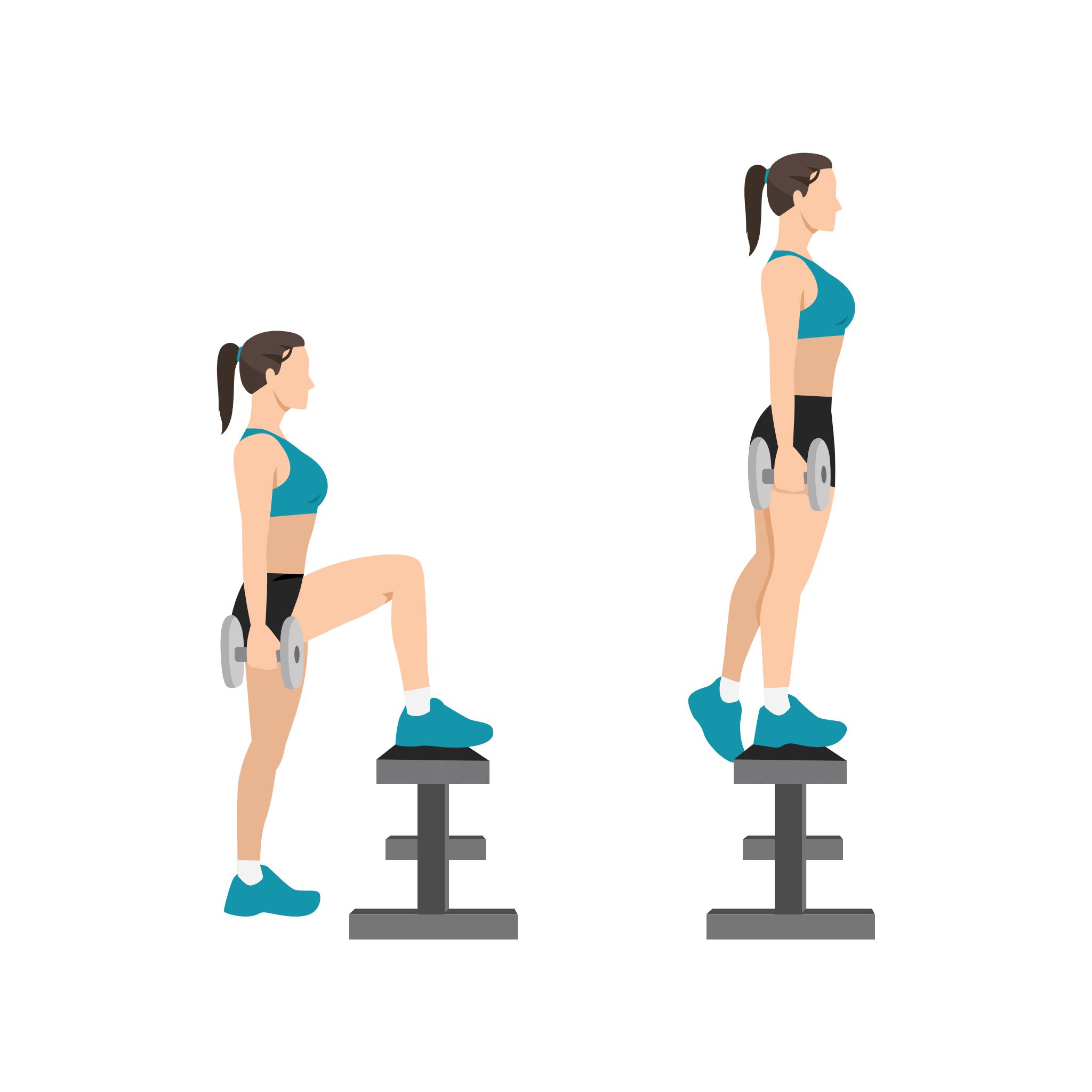
Dumbbell step-up
Stand in front of a step or bench and hold a pair of dumbbells by your sides. Place your right foot on the step, so that your knee bends at a 90-degree angle. Keeping your back leg straight, extend the right leg so that the left leg hovers in the air. Step the left leg onto the step and then step both legs back to the floor. Repeat on the other side. Continue alternating sides.
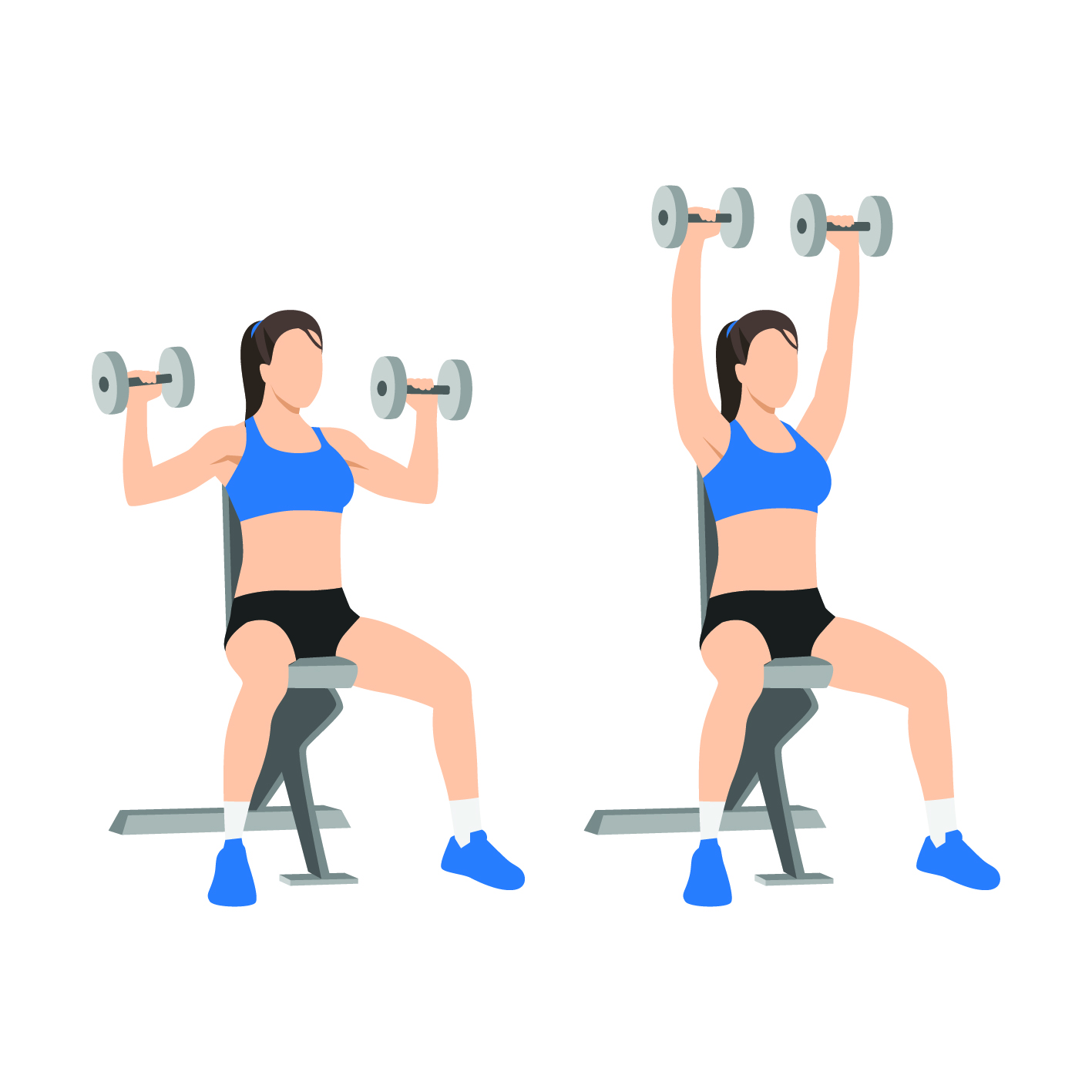
Seated shoulder press
Standing tall or sitting on a bench, engage your abs and squeeze your thighs and glutes to keep the rest of your body stable. Position your dumbbells to each side of your shoulders. Press up until your arms are straight. Slowly lower the weights with control and immediately repeat the press overhead.
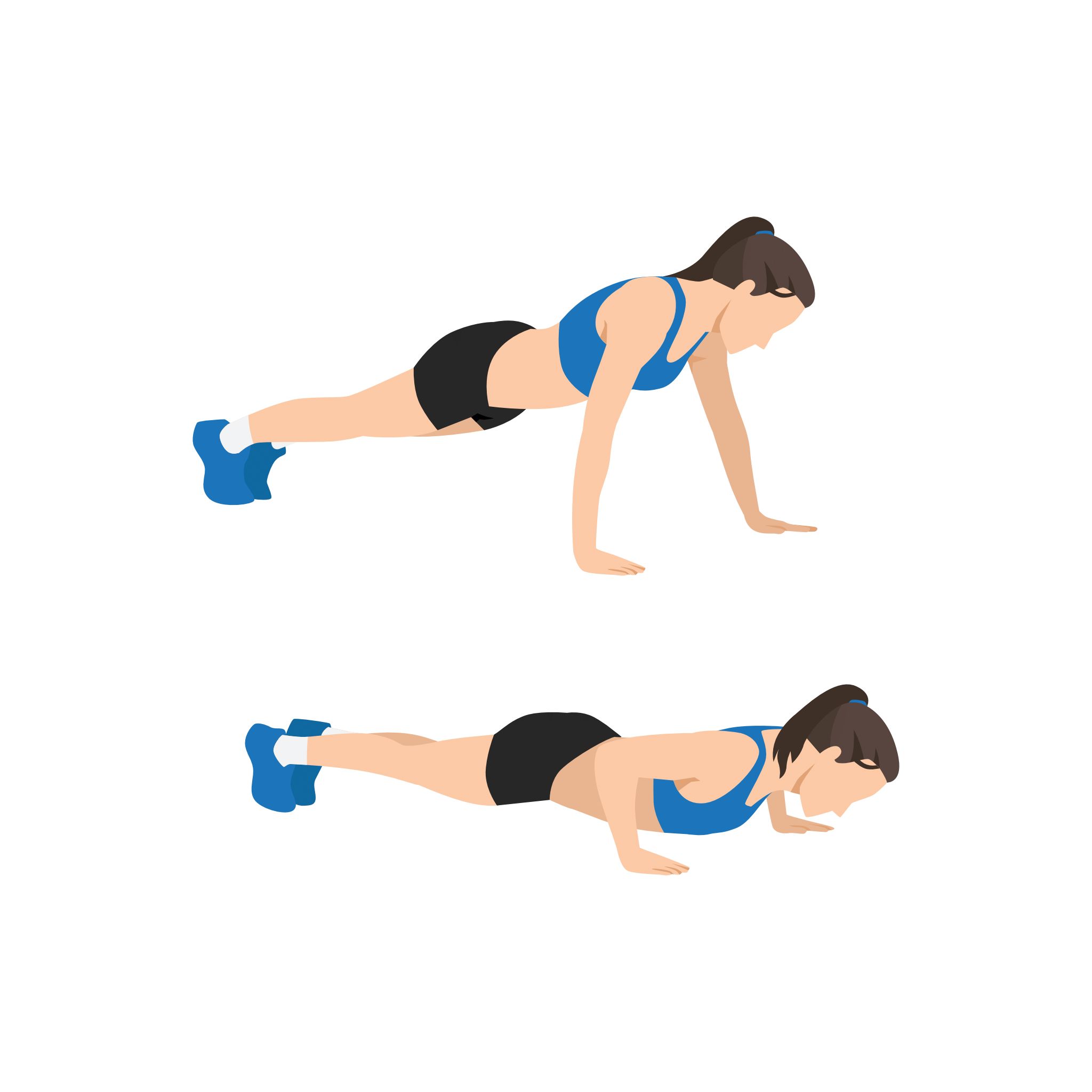
Push-up
Begin in high plank with wrists under shoulders. If this is too tough, drop your knees to the floor. Bend your elbows to lower your chest towards the floor. Push back up, then repeat. Do as many reps as possible (AMRAP) with good technique.
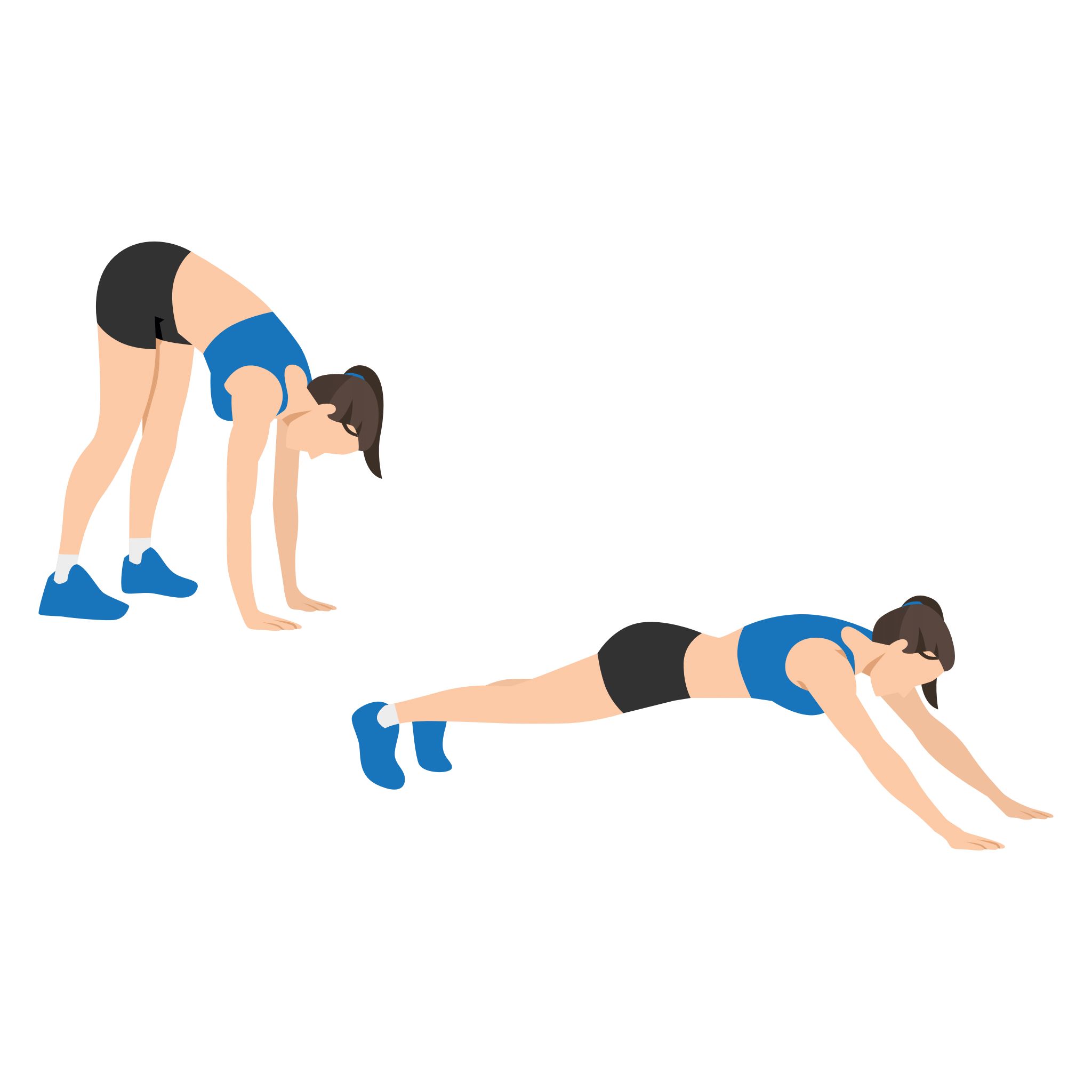
Walkout
Stand with feet hip-width apart and fold forward at the waist. Place your palms on the floor, bending knees if necessary. Walk your hands forward to a plank position with wrists under shoulders. Walk your hands back to your feet, stand up and repeat.
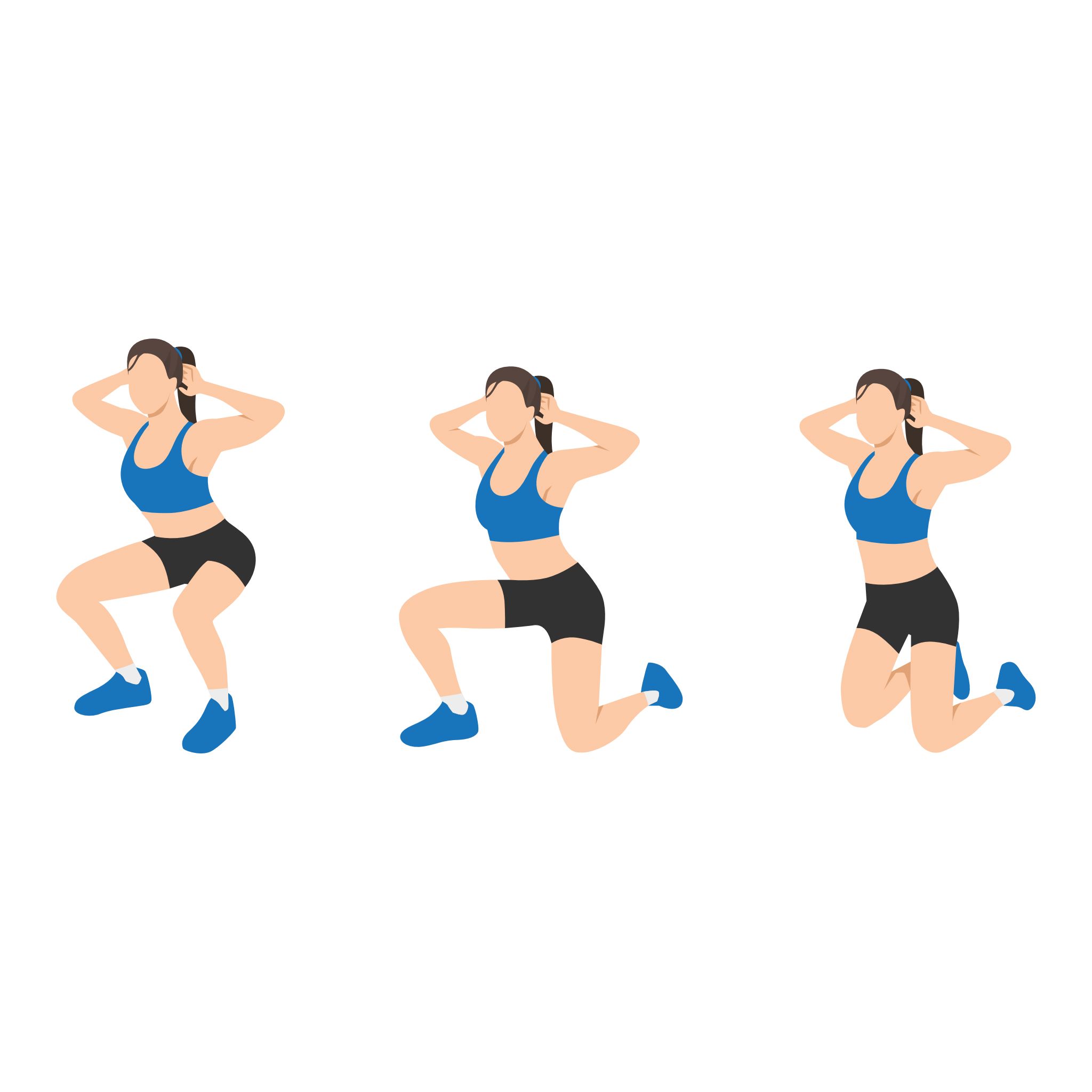
Kneel-to-squat
Begin in a kneeling position with legs hip-width apart and hands behind your ears. Step one foot at a time on to the floor, squeezing your core to stay stable. Pause when in the squat position, then place one leg at a time on the floor to return to kneeling, and repeat.
Workout B
- Assisted pull-up: 3×10 (rest 90 secs)
- Lateral raise: 3×15 (rest 60 secs)
- Chest-supported row: 3×15 (rest 60 secs)
- Rear delt fly: 3×15 (rest 60 secs)
- 10 mins of:
- 40 seconds Side plank rotations (rest 15 secs)
- 40 seconds Push-up to plank (rest 15 secs)
Chin-up
Hold the bar with hands wider than shoulder-width apart, palms facing you and arms straight. Lean back 30° and pull up until your chest touches the bar. Pause for a second, lower and repeat. If this is too tough, try looping a resistance band around the bar and your feet or hanging from the bar for 25-20-15-10-5 seconds.
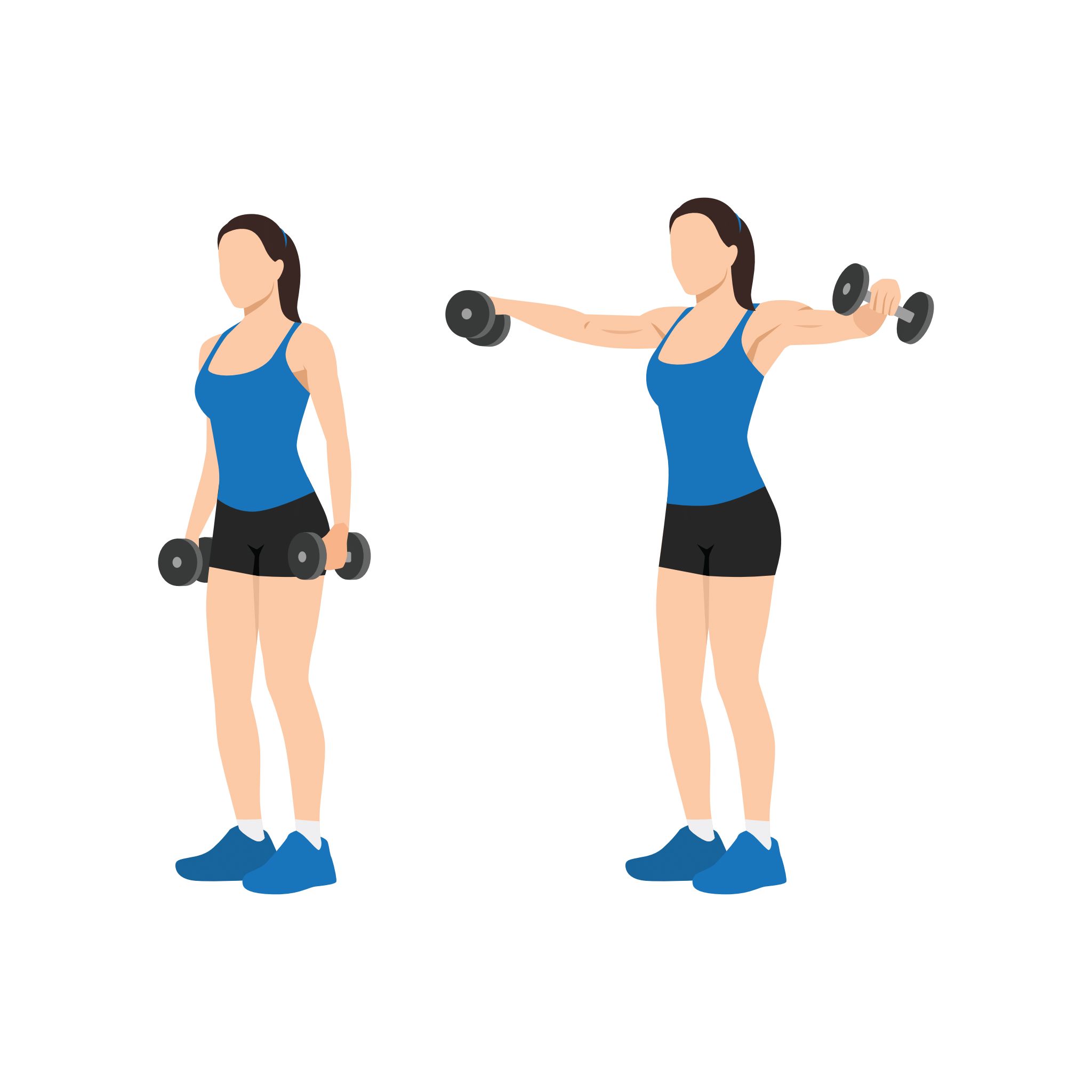
Lateral raise
Start with feet hip-width apart and a light-to-medium weight dumbbell in each hand. Engage your core and raise your arms straight out to the sides to shoulder level, leading with the elbows. Pause, lower your arms and repeat.
Chest-supported row
Position a workout bench at 45-degrees and lie face-down. Grab a dumbbell with each hand, palms facing back, and row the elbows back while retracting the shoulder blades. Pull until the dumbbells are past your midline, then lower and repeat.
Rear delt fly
Stand with a weight in each hand. Lean forwards from the waist, with a flat back. With palms facing each other, squeeze your shoulder blades to lift your arms out to the side until the weights are at shoulder level. Lower and repeat.
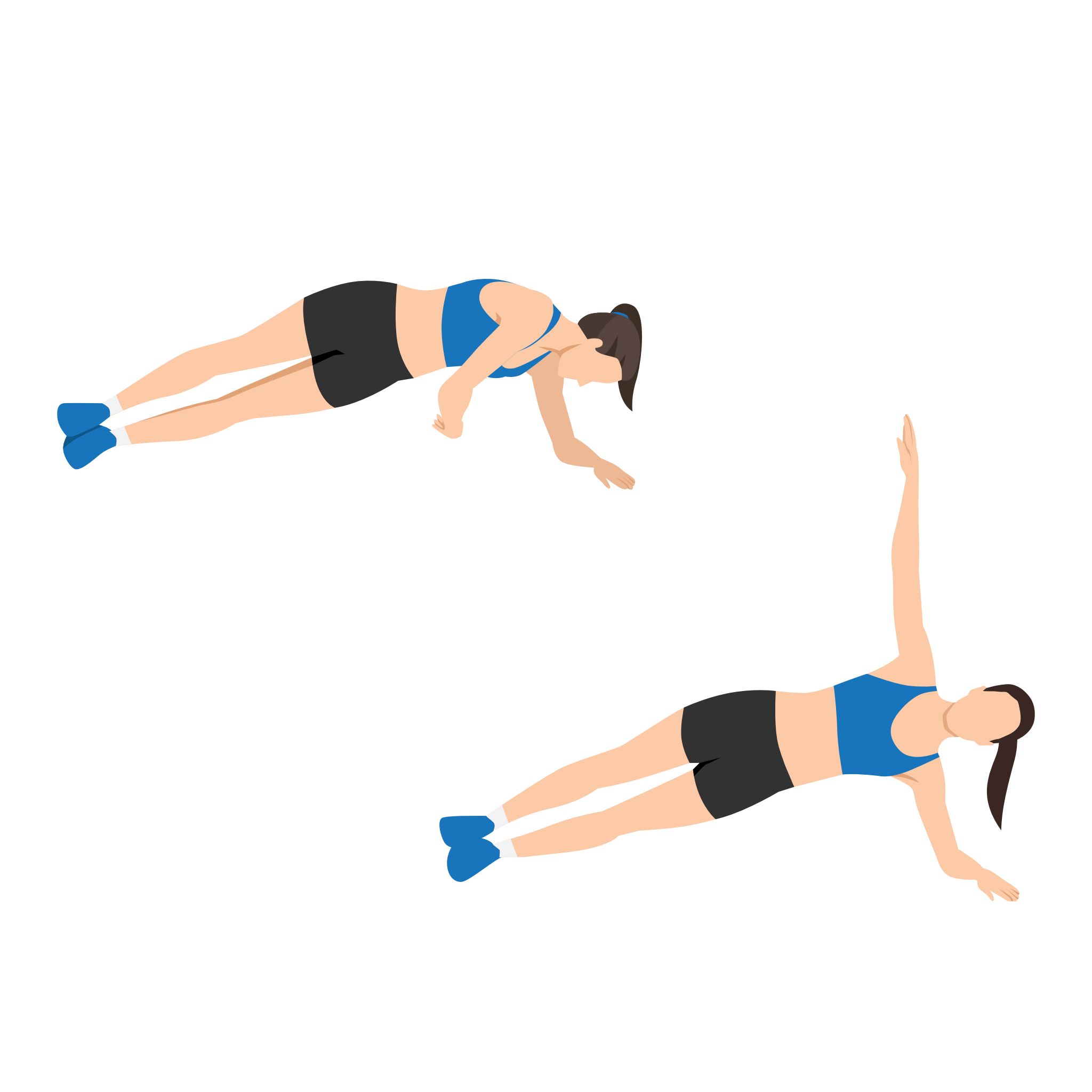
Side plank rotations
Start in a side plank position, with feet stacked (or staggered) and the lower elbow under the shoulder. Your body is in a straight line with top arm extended. Reach under your torso with your top arm, return to start position, then repeat on the other side.
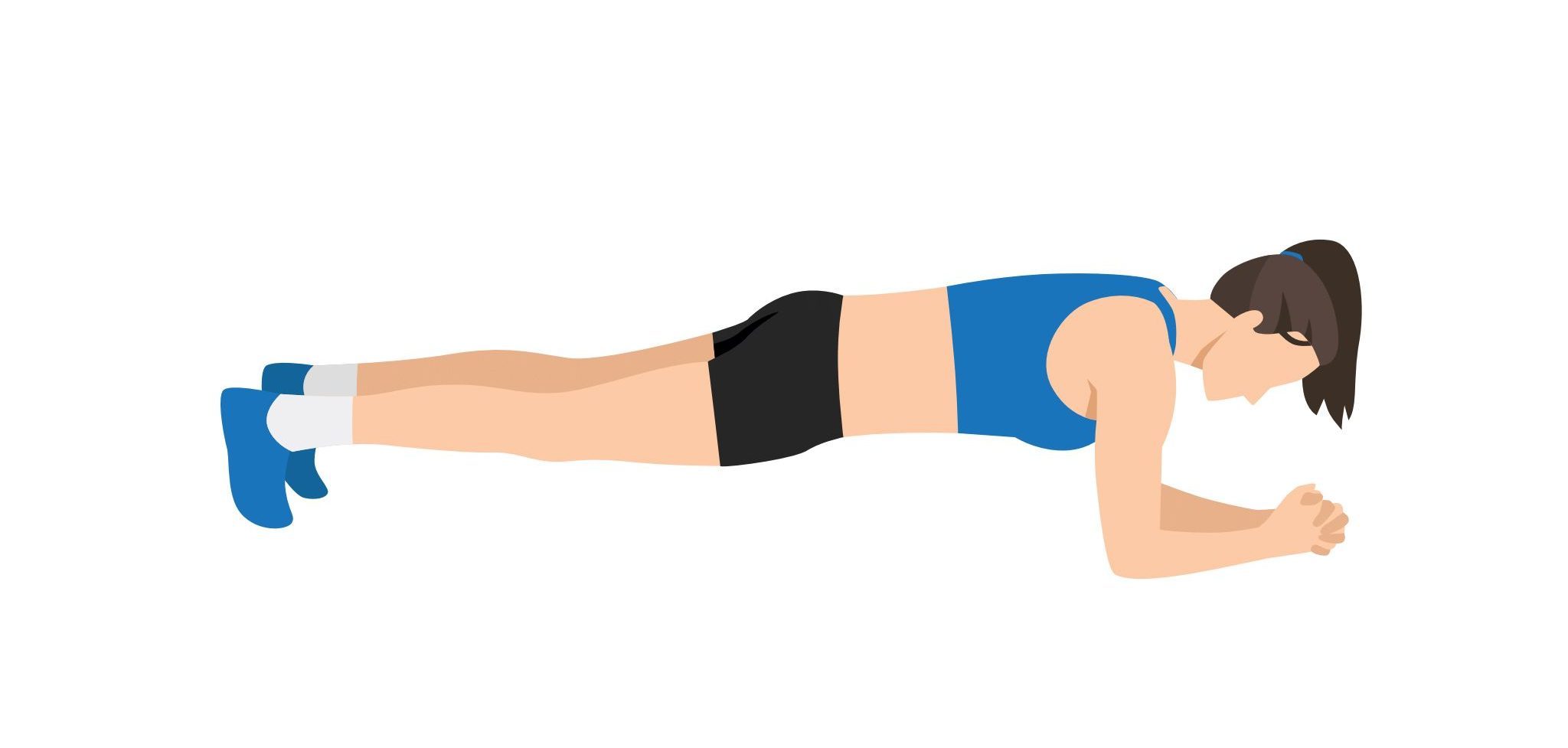
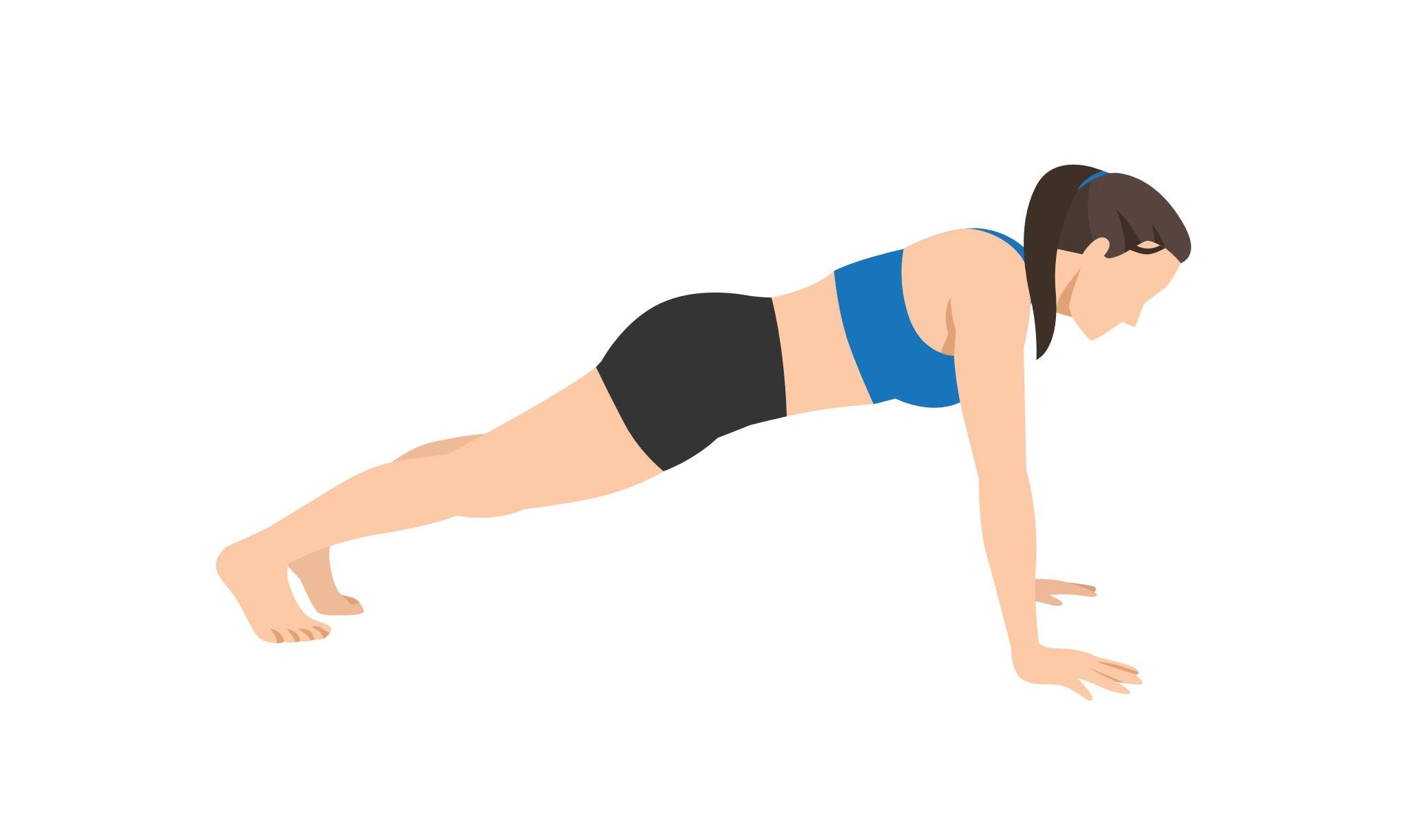
Push-up to plank
Start in a plank position with core engaged, body in a straight line and weight on your forearms. Step one arm at a time up into a high plank, so your weight is on your hands. Reverse the process by stepping arms back down to plank. That’s one rep. Continue walking arms up and down for the set number of repetitions.
Workout C
- Barbell deadlift: 3×12 (rest 90 secs)
- Barbell hip thrust: 3×12 (rest 60 secs)
- Back extensions: 3×15 (rest 60 secs)
- Dumbbell reverse lunge: 3×12 each side (rest 60 secs)
- 10 mins of:
- 40 seconds Squat jump (rest 15 secs)
- 40 seconds Renegade row (rest 15 secs)
Barbell deadlift
Stand with your feet hip-width apart and the balls of your feet directly under the bar. Looking ahead, bend at the hips and knees to grab the bar with an overhand grip. Your hands are shoulder-width apart and arms are straight. Without allowing your lower back to round, stand up with the barbell. Pause momentarily and then lower back to the floor. Repeat.
Barbell hip thrust
Sit, resting your rear shoulders on a bench, knees bent, feet on floor and a barbell resting on your hips, palms facing down. Squeeze your bottom and raise your hips so your body is in a bridge position, keeping your thighs in line. Hold this position for two seconds before lowering to the start. Repeat.
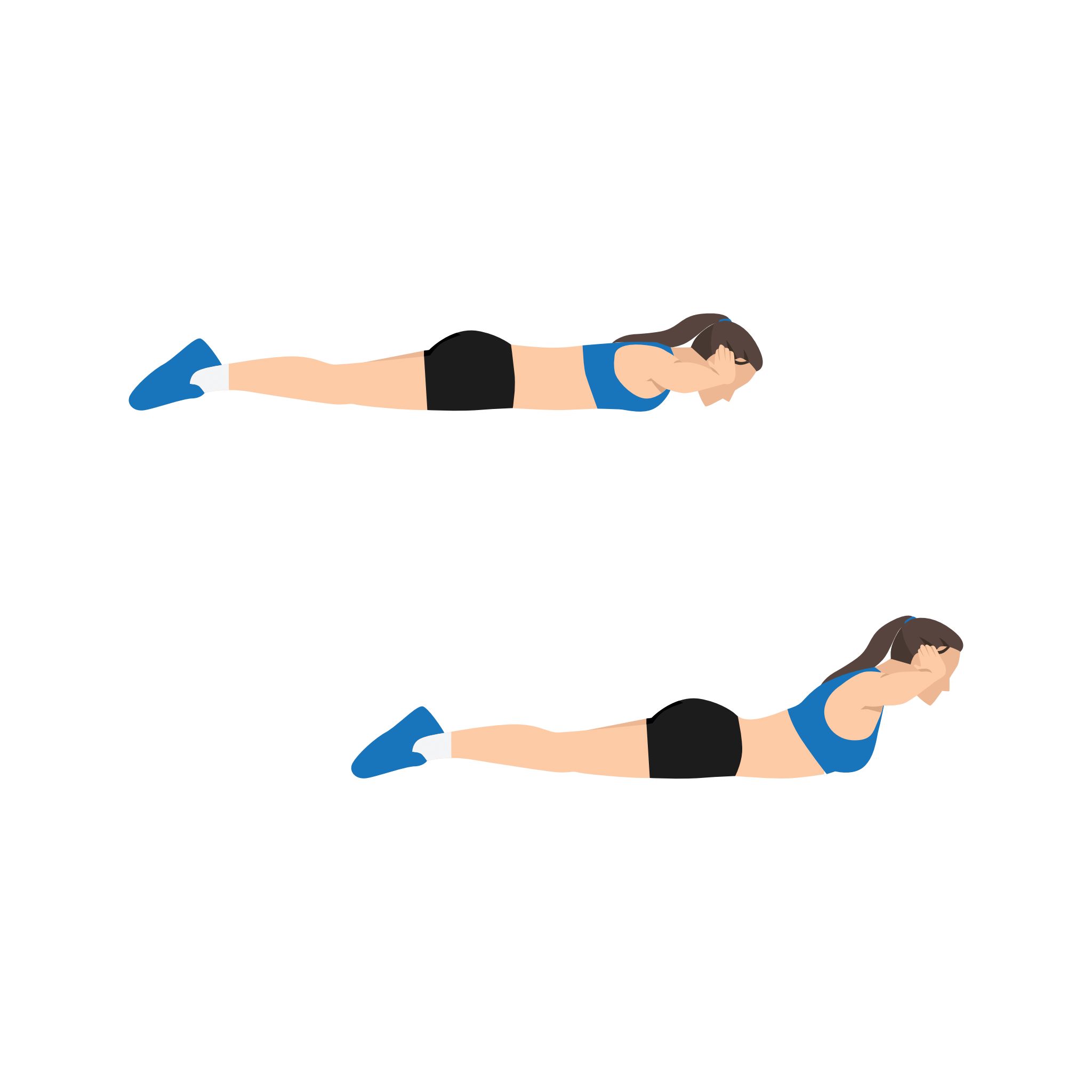
Back extensions
Resting your feet against a wall or stable object, lie face-down, hands behind your ears. Squeeze your glutes, raise your shoulders and arch your back until your spine is slightly extended. Pause at the top, then slowly return to the start. Repeat. Progress by performing the move with your pelvis (not stomach or chest) on a ball and crossing your hands across your chest.
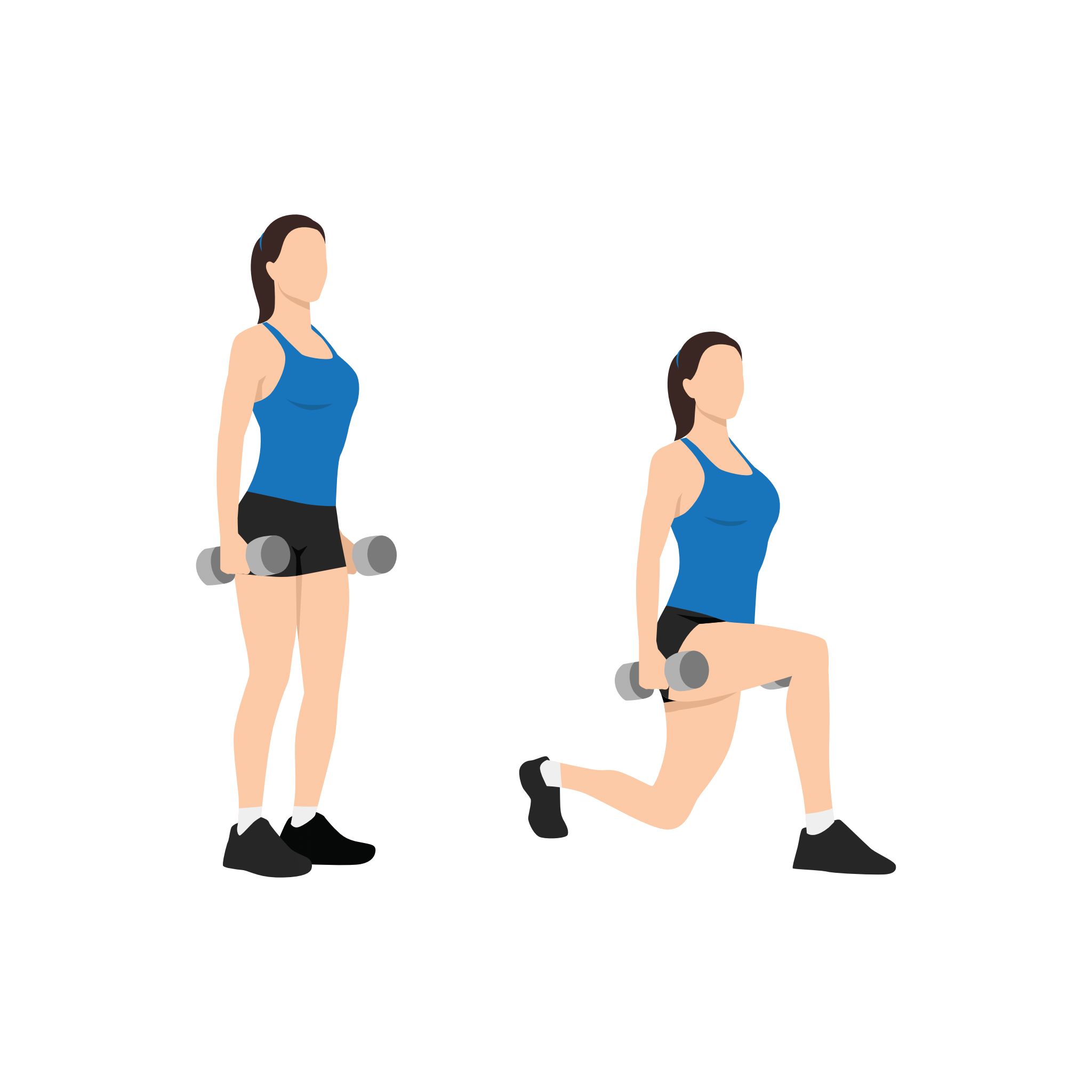
Dumbbell reverse lunge
Stand with feet together and a dumbbell in each hand. Step backwards with the left leg until you are in a lunge position, with your front leg bent at a 90-degree angle and back knee nearly touching the ground. Push back up until your back leg joins the front, then step backwards with the right leg. Repeat.
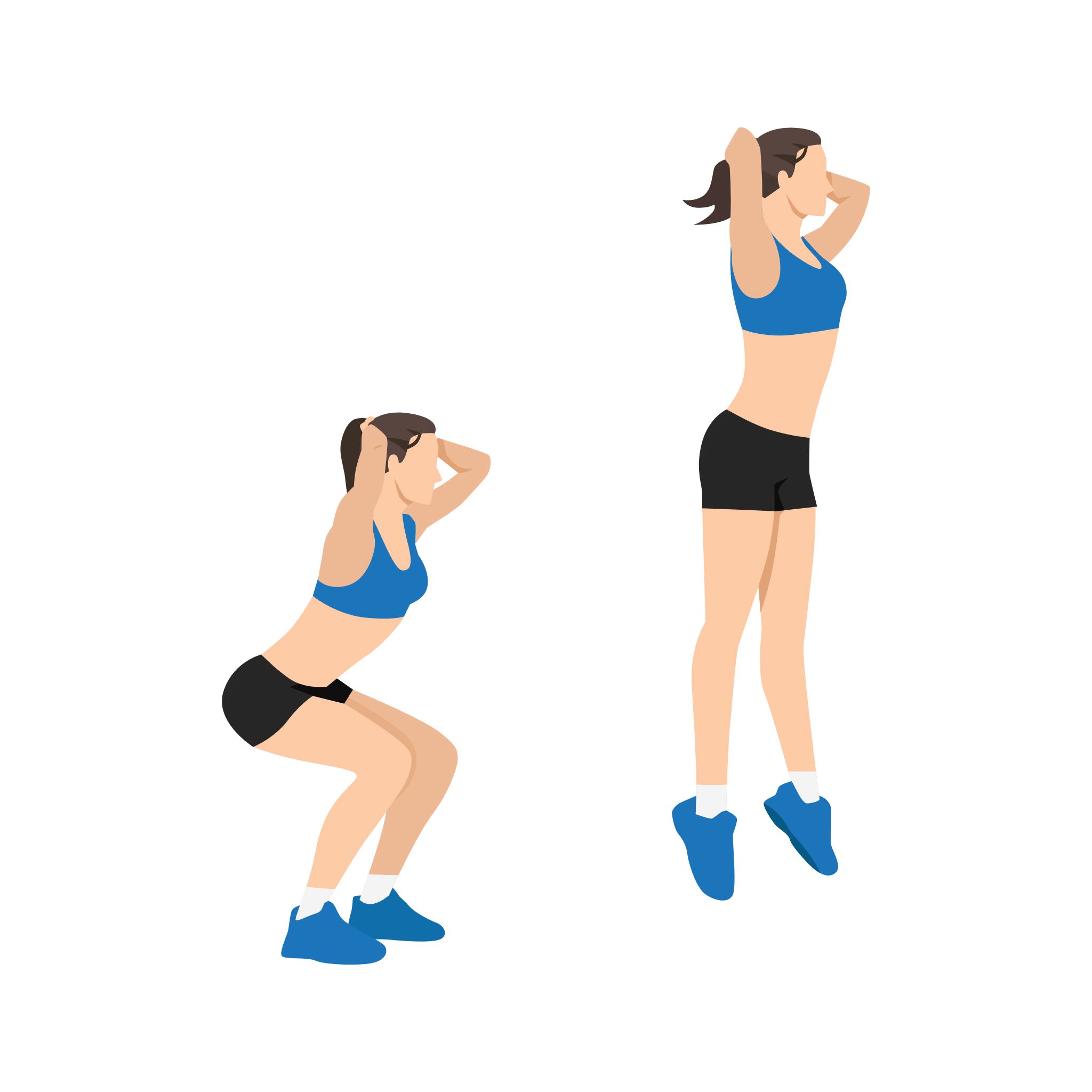
Squat jump
Stand with feet shoulder-width apart and hands clasped behind your head. Bend the knees to squat down as far as you can, then push through the feet to propel you upwards as you jump into the air. Land in the squat position and jump back into the air. Repeat.
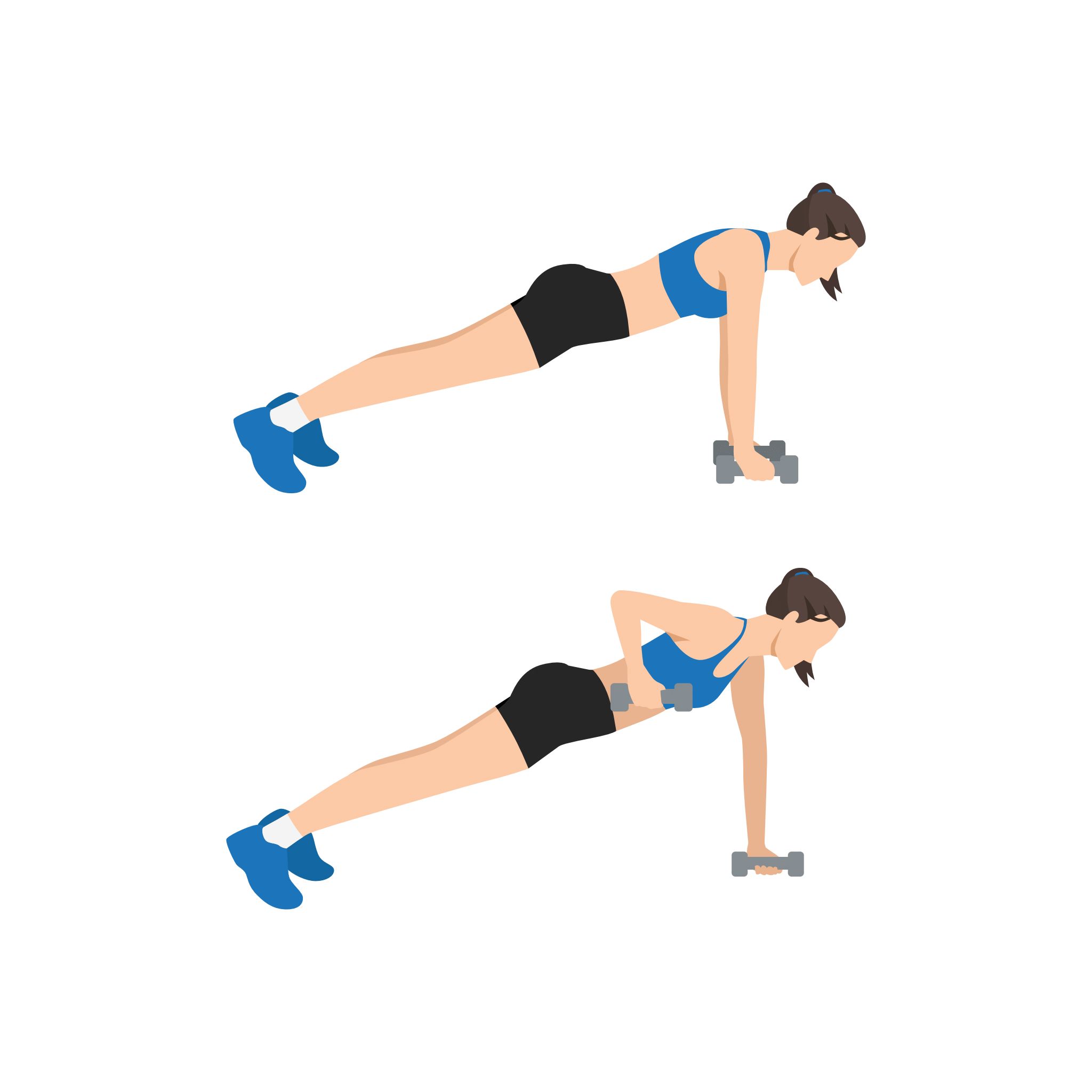
Renegade row
Start in a full or modified push-up position, hands resting on dumbbells. Row the right hand up towards the chest. Lower and repeat on the left side. Try to keep your body parallel to the floor and as still as possible.
Words: Josh Ivory & Sarah Sellens | Images: Shutterstock


